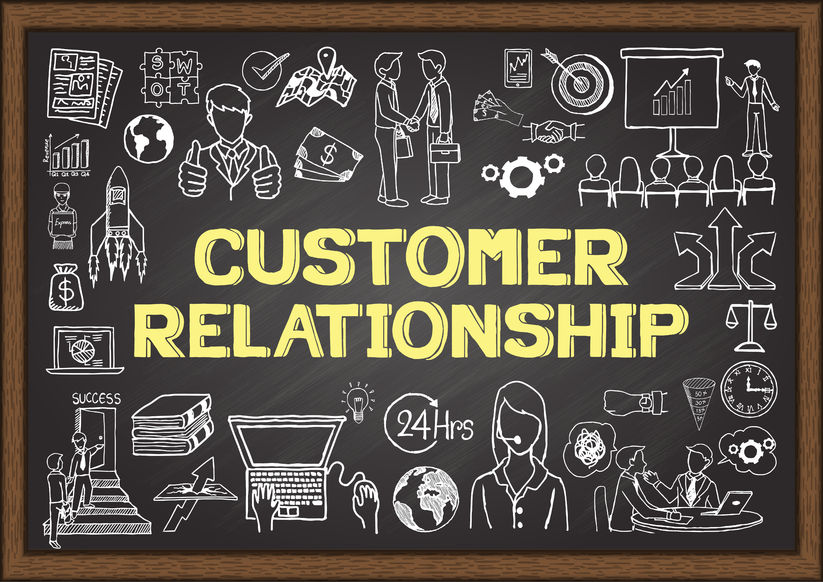Turn It Up Tuesday: Tips from Insightly to Take Your Business to 11
Welcome to Turn It Up Tuesday, where we bring you 4 weekly tips—a tip on running your business, a tip on using Insightly CRM, a tip on improving your sales, and a tip on improving your life. Enjoy this week’s tips!
 |
Track Sales Appointments in Insightly |
| Your sales team is (or should be) focused primarily on closing deals and generating highly satisfied customers.
Those are pretty lofty goals without a proper plan for the day-to-day. For this reason, both management and sales reps need tangible, short-term benchmarks to help them stay on track. One commonly tracked metric involves the number of sales appointments set and/or made. If you’re using Insightly, you can easily keep track of past and upcoming appointments (along with other important sales KPIs). Here’s how to get started:
|
|
 |
Always Have Your CRM Handy |

Most CRMs offer a mobile app for their users. (Insightly is no exception – download Insightly’s apps here.) Unfortunately, your phone is already bogged down with dozens of other apps. Is it really worth installing another app that you may – or may not – use? Having your CRM just a tap away can be incredibly useful, particularly for small business owners. Here are a few reasons to consider: Capturing ideas: Whether you’re at a ballgame or stuck in line at the store, you never really know when genius will strike. By capturing ideas as tasks or projects in your CRM, you can easily link to other related ideas, assign users and due dates, and upload handwritten notes. Better now than later! Maintaining better customer notes: These days, most smartphones offer some type of voice dictation. The problem is that you have to save the file on your phone, find it, email it to yourself, and then remember to actually use it. A better approach is to capture voice notes directly on the contact’s record in your CRM. No busywork later on. Digitizing business cards: How many business cards have you lost or misplaced over the years? A good CRM mobile app will let you scan in business cards, instantly creating new leads on your behalf. That’s especially important at trade shows or networking events.
|
|
 |
Get Affirmation on Your Calendar Events |
|
You’re moving at a mile a minute. Clients never seem to stop calling. Emails and to-do lists fill your every waking moment. Needless to say, going this quickly can sometimes lead to careless oversights. To create structure for an otherwise chaotic work life, you probably already use an online calendar. Employees, contractors, and clients routinely send invitations that automatically post events to your calendar. Such inbound invitations are great because you’re not the instigator. You simply click the accept button, and technology handles the rest. If the event’s time or date was entered incorrectly, it’s ultimately not your problem. Of course, there are many other events for which you’re solely responsible. In fact, other people may not officially be “invited” via your calendar – but, they still expect you to show up. For example, when:
Such events can easily be entered incorrectly, which makes them equally easy to overlook. When the appointment rolls around, you probably find yourself asking questions such as, “Is this appointment really at 4:30 – or did I just enter it incorrectly again?” Avoid all of this confusion by making a habit of using the event’s title and/or description to double confirm the details with yourself. The likelihood of entering a wrong date/time twice on the same event is nearly impossible.
|
|
Cut Back on Sales Admin With Abbreviations |
|

Cut Back on Sales Admin with Abbreviations Sales is a game of numbers. All things being equal, more calls lead to more discussions. Discussions lead to opportunities, and opportunities convert into sales. Every second spent on unnecessary administrative work is a second wasted. However, your company does need reliable information input into your CRM system. There are many ways to make your sales team more efficient. In addition to leveraging activity sets and lead assignments, it’s also wise to standardize how your team captures information. For example, simply reducing the number of characters keyed into your CRM can make a noticeable impact. To illustrate this point, open up a document and key in this phrase: “I left a voicemail with the customer.” By my calculations, that takes about 5 seconds to key in. Now try this: “LVM.” Less than a second, right? Just think about the hundreds of voicemails reps leave per year. Assuming a conservative 500 voicemails per rep, each team member could save 30 minutes annually in non value-added time. Multiply this across all team members and common phrases, and it really starts to add up. Here are a few possible abbreviations to try:
Alternatively, you could try using tags for some (or all) of such phrases. It’s really up to how your organization uses its CRM system.
|
Would you like to share your tips with Insightly customers? Send them to us! If we use one in our weekly feature we’ll send you a $10 Amazon Gift Card! Contact us on Facebook, Twitter, Google+, or send us an email.
Share love, share Insightly: Refer Insightly, Receive a Reward.
About the author: Matt Keener is a marketing consultant and President of Keener Marketing Solutions, LLC. Matt specializes in content marketing and strategic planning, having helped numerous Saas (software as a service) companies and other small businesses worldwide. Read more of Matt’s work, check out his book, or connect with him on Linkedin.
































